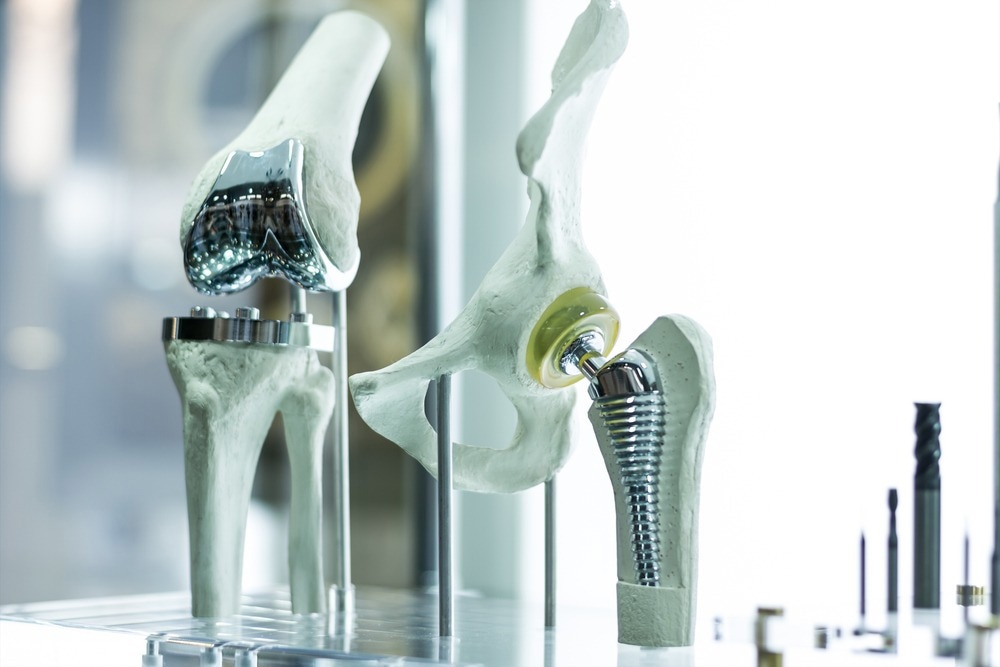Scientists have taken a big leap towards 3D laser-printed materials that can be employed in surgical procedures to repair or implant medical devices.

Image Credit: Monstar Studio/Shutterstock.com
A research team at Lancaster University developed an approach to 3D print flexible electronics with the conducting polymer polypyrrole. They disclosed that printing such electrical structures directly on or in living organisms (roundworms) is now possible.
Despite being at a proof of concept stage, scientists consider this kind of process, when completely developed, can print patient-specific implants for a wide range of applications, which include medical interventions and real-time health monitoring, like treating epilepsy or pain.
This approach potentially transforms the manufacture of complex 3D electronics for technical and medical applications—including structures for communication, displays, and sensors, for example. Such approaches could revolutionize the way we implant but also repair medical devices.
Dr. John Hardy, Study Lead Author and Senior Lecturer, Materials Chemistry, Lancaster University
Dr. Hardy continues, "For example, one day technologies like this could be used to fix broken implanted electronics through a process similar to laser dental/eye surgery. Once fully mature, such technology could transform a currently major operation into a much simpler, faster, safer, and cheaper procedure."
To 3D print an electrical circuit straight within a silicone matrix (using an additive process), the scientists employed a Nanoscribe (a high-resolution laser 3D printer) in a two-stage study. They showed that these electronics have the potential to stimulate mouse neurons in vitro (just like how neural electrodes are utilized for deep brain stimulation in vivo).
We took 3D printed electrodes and placed them on a slice of mouse brain tissue that we kept alive in vitro. Using this approach, we could evoke neuronal responses that were similar to those seen in vivo. Readily customized implants for a wide range of tissues offers both therapeutic potential and can be utilized in many research fields.
Dr. Damian Cummings, Study Co-author and Lecturer, Neuroscience, University College London
The scientists 3D printed in the second stage of the study by conducting structures straight into nematode worms showing that the complete process (laser exposure, ink formulations, and printing) is well-suited to living organisms.
We essentially tattooed conductive patches on tiny worms using smart ink and lasers instead of needles. It showed us that such technology can achieve the resolution, safety, and comfort levels required for medical applications. Although improvement in infrared laser technology, smart ink formulation, and delivery will be critical to translating such approaches to the clinic, it paves the way for very exciting biomedical innovations.
Dr. Alexandre Benedetto, Study Lead Author and Senior Lecturer, Biomedicine, Lancaster University
The scientists consider that these findings are a key step emphasizing the prospective for additive manufacturing methods to create next-generation advanced material technologies—especially integrated electronics for bespoke and technical medical applications.
The further steps in the development of the study are already ongoing, which include exploring the structures’ type in which it is possible to print, the materials in which it is possible to print, and designing prototypes to demonstrate likely end users who may be keen in co-development of the technology. The research team hope that the technology is nearly 10 to 15 years from being completely developed.
Their results are published in the academic journal Advanced Material Technologies.
The study was funded by a variety of sources that include: the Engineering Physical Sciences Research Council (EPSRC), the Biotechnology and Biological Sciences Research Council (BBSRC), the Medical Research Council (MRC), the Royal Society, the Wellcome Trust, and Alzheimer’s Research UK.
Journal Reference:
Baldock, S. J., et al. (2023). Creating 3D Objects with Integrated Electronics via Multiphoton Fabrication In Vitro and In Vivo. Advanced Materials Technologies, 2201274. https://doi.org/10.1002/admt.202201274.